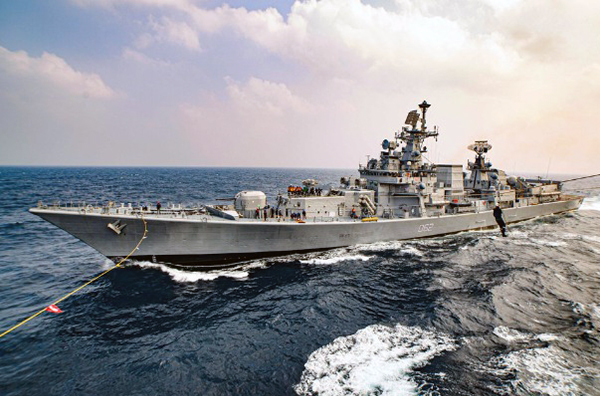The Russian attack on Ukraine has put India in a spot. New Delhi is facing demands from the West and Ukraine to condemn Russia, while needing to preserve its changing, but still vital, relationship with Moscow.
The most visible aspect of India’s relationship with Russia has been arms deals. Russian hardware still accounts for approximately 70 per cent of India’s weapons. But not many laypersons know Ukraine also plays a vital role as a supplier to India’s military, including providing crucial subsystems for Russian weapons.
Ukraine and India have been engaged in an arduous process to upgrade the Indian Air Force’s fleet of over 100 Antonov An-32 transport aircraft. The Antonov upgrade programme was briefly disrupted by the conflict in Crimea in 2014. But Ukraine has, arguably, had primacy in the supply of one type of crucial system to India: Marine gas turbine engines to the Indian Navy.
Around 30 ships of the Indian Navy use gas turbines from Ukraine’s Zorya Mashproekt as their primary source of propulsion. These ships range from the nimble Veer class missile boats (which displace around 500 tonnes) to the ageing Rajput class destroyers to the brand-new Visakhapatnam class destroyers (displacement of around 8,000 tonnes). Four frigates of the Russian-designed Admiral Grigorovich class, which are being built for the Indian Navy at shipyards in Russia and Goa, also use engines from the Zorya facility.
Captain D.K. Sharma (retired) warned the conflict in Ukraine could potentially cripple the Indian Navy. Sharma had been spokesperson of the Indian Navy.
Sharma explained that gas turbines are complicated systems, which cannot be replaced easily. He noted “Warships are designed around their engines. If your ship is meant for anti-submarine warfare, it needs an engine that is quiet. If you need shoot-and-scoot capability, you need an engine that offers speed. These capabilities need specific components for cooling and auxiliary parts. You can’t replace a gas turbine with a diesel engine.”
Sharma noted that while the Indian Navy’s marine gas turbine overhaul centre at INS Eksila in Visakhapatnam could overhaul the existing engines, such a facility would still need parts from the original supplier.
In November last year, Zorya Mashproekt signed an agreement with Bharat Heavy Electricals Limited (BHEL) to allow for ‘partially localised’ manufacturing of some components of the marine gas turbines used in India. But it is yet unclear how much progress the venture has made.
Soviet legacy
The Indian Navy’s relationship with Ukraine is a consequence of its Cold War era dependence on the USSR as its primary source of ships and equipment.
The Zorya facility was a major supplier to the Soviet and later Russian navies. In fact, two of the Admiral Grigorovich class warships that are being built for the Indian Navy were originally meant for the Russian Navy. However, Russia cancelled the order after Ukraine embargoed the sale of the engines from the Zorya facility, following the invasion of Crimea. For the four ships, India had to separately purchase the gas turbines from Ukraine for installation on the vessels.
Sharma pointed out India would have to exhibit diplomatic dexterity to ensure that the flow of spares and parts from Ukraine for the gas turbines would continue.
Retired rear admiral Sudarshan Shrikhande hoped that the Indian government would have found the means to have obtained spares as part of its stocking in earlier months and years of parts from Ukraine. He reiterated the importance of the industrial facility INS Eksila, which was inaugurated in 1991, crediting the Indian Navy leadership of the time for the vision to create a centre in India to service gas turbine propulsion and power generation machinery of several classes of ships, instead of sending them back to Ukraine or Russia.
CAATSA trouble
However, Shrikhande said that the conflict in Ukraine could, nonetheless, lead to several complications for spares and new construction, including exorbitant costs for even simpler components and small parts. This is a phenomenon, as has been reported in the media, that the Indian armed forces encountered in the wake of the collapse of the Soviet Union.
“In addition, if Ukraine becomes Russian territory or is under Russian de facto control, then it is possible that Western sanctions could apply to payment and transportation issues for a long time to come. As such, we can expect a renewed push for measures like CAATSA against Moscow that would impact us in several ways,” Shrikhande noted.
Shrikhande added that all these risks point to a greater need to be genuinely self-reliant and ‘atmanirbhar’ in so many areas including aero and marine gas turbines for the Navy and Air Force of tomorrow.


















